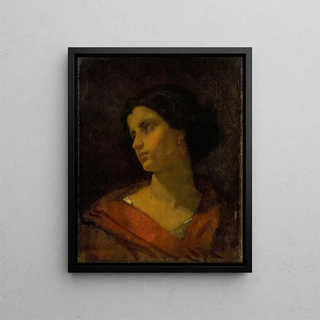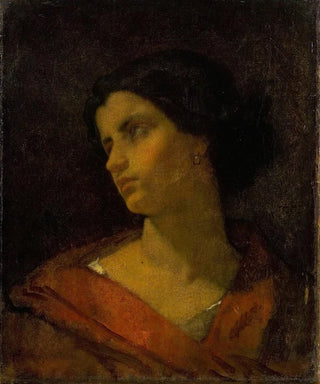Art print | Study of a woman's head - Thomas Couture


View from behind

Frame (optional)
Thomas Couture's artwork "Study of a Woman's Head" is rooted in an artistic tradition where the female portrait becomes a true exploration of emotions and states of mind. This study, created in the 19th century, reflects an era when art echoed the aspirations and struggles of society. By scrutinizing the delicate face of this woman, the artist manages to capture a fleeting essence, an ephemeral beauty that transcends the simple frame of portraiture. The finesse of the features and the subtle light caressing the face invite viewers to ponder the identity and psychology of this model, revealing the depth of the work.
Style and uniqueness of the work
The uniqueness of "Study of a Woman's Head" lies in Couture's technical mastery, which combines skill and sensitivity. The rendering of textures, whether the softness of the skin or the delicacy of the hair, demonstrates exceptional craftsmanship. The nuances of color, far from being merely aesthetic choices, contribute to the intimate atmosphere of the piece. The artist plays with light and shadow, creating a contrast that emphasizes the facial features and brings this female figure to life. Moreover, the expression of the model, both pensive and serene, evokes a rare psychological depth, encouraging viewers to reflect on the condition of women in that era and on the many facets of the human soul.
The artist and his influence
Thomas Couture, an emblematic figure of the 19th century, is often recognized for his pioneering role in the realist movement. His ability to blend academic tradition with stylistic innovations marked a generation of artists. By focusing on everyday subjects and paying homage to the beauty of ordinary life, Couture paved the way for new forms of artistic expression. His influence is felt not only in his own works but also among his students, some of whom are famous names who managed to break free from the conventions of their time. Through "Study of a Woman's Head," the artist manages to transcend his era, offering a vision of portraiture that resonates

Matte finish

View from behind

Frame (optional)
Thomas Couture's artwork "Study of a Woman's Head" is rooted in an artistic tradition where the female portrait becomes a true exploration of emotions and states of mind. This study, created in the 19th century, reflects an era when art echoed the aspirations and struggles of society. By scrutinizing the delicate face of this woman, the artist manages to capture a fleeting essence, an ephemeral beauty that transcends the simple frame of portraiture. The finesse of the features and the subtle light caressing the face invite viewers to ponder the identity and psychology of this model, revealing the depth of the work.
Style and uniqueness of the work
The uniqueness of "Study of a Woman's Head" lies in Couture's technical mastery, which combines skill and sensitivity. The rendering of textures, whether the softness of the skin or the delicacy of the hair, demonstrates exceptional craftsmanship. The nuances of color, far from being merely aesthetic choices, contribute to the intimate atmosphere of the piece. The artist plays with light and shadow, creating a contrast that emphasizes the facial features and brings this female figure to life. Moreover, the expression of the model, both pensive and serene, evokes a rare psychological depth, encouraging viewers to reflect on the condition of women in that era and on the many facets of the human soul.
The artist and his influence
Thomas Couture, an emblematic figure of the 19th century, is often recognized for his pioneering role in the realist movement. His ability to blend academic tradition with stylistic innovations marked a generation of artists. By focusing on everyday subjects and paying homage to the beauty of ordinary life, Couture paved the way for new forms of artistic expression. His influence is felt not only in his own works but also among his students, some of whom are famous names who managed to break free from the conventions of their time. Through "Study of a Woman's Head," the artist manages to transcend his era, offering a vision of portraiture that resonates






